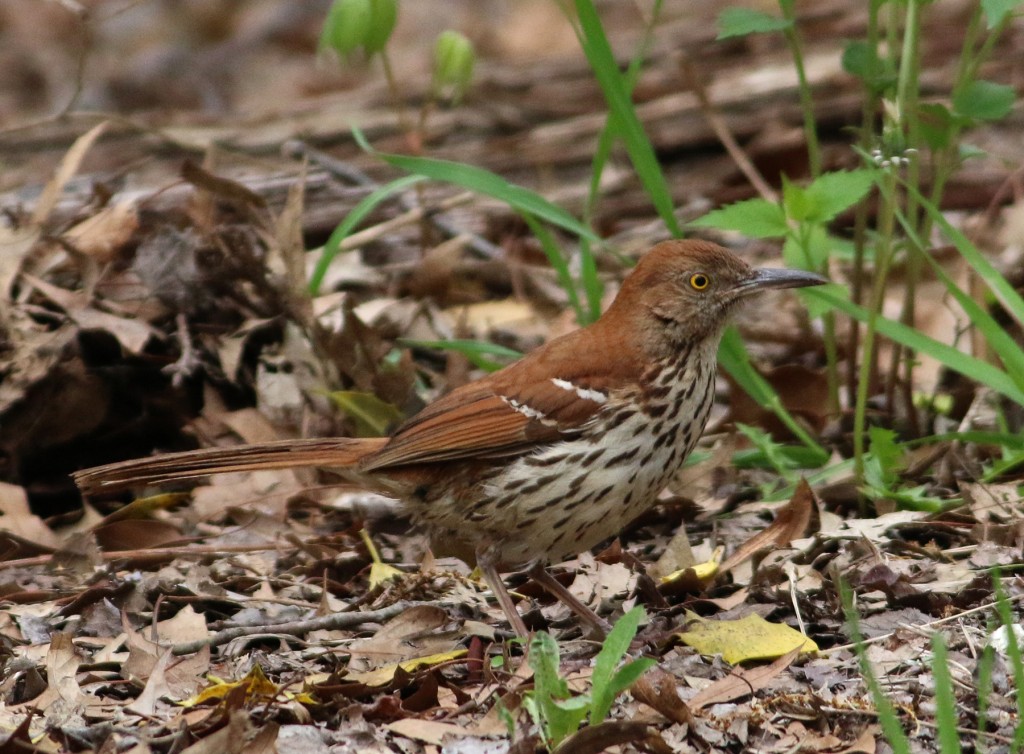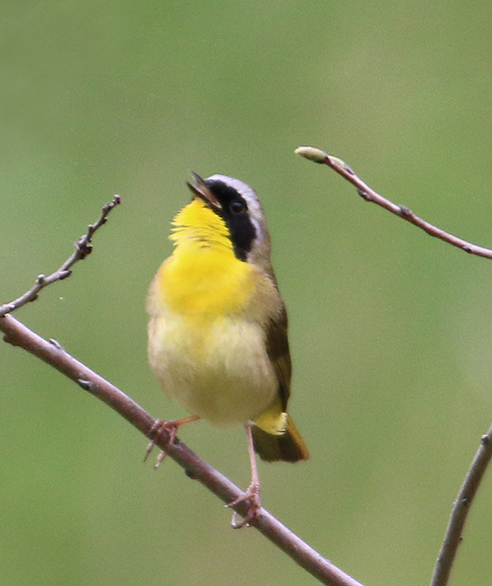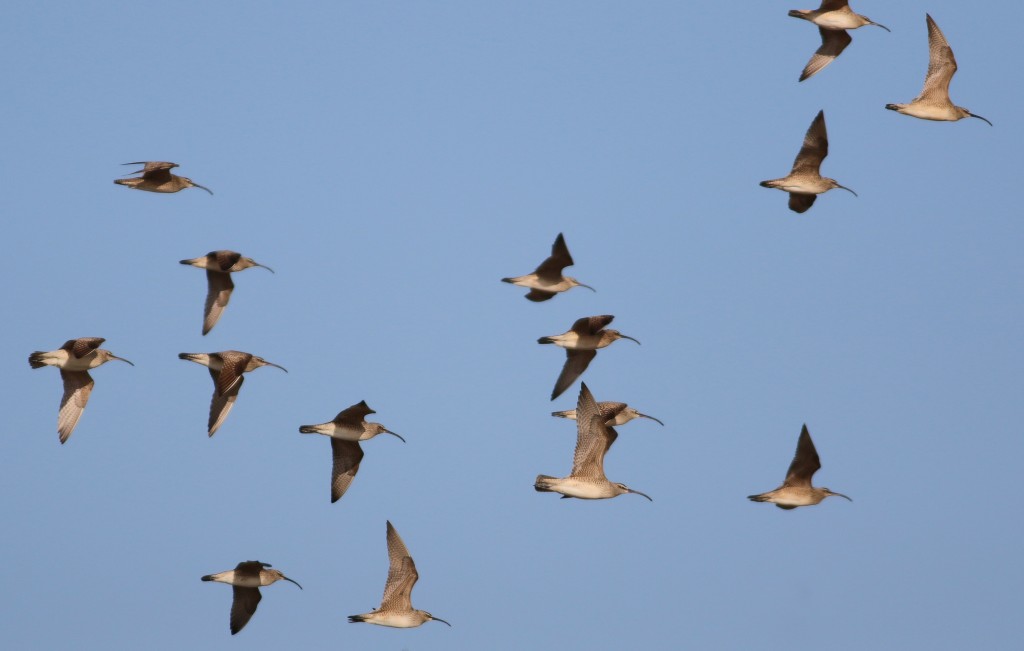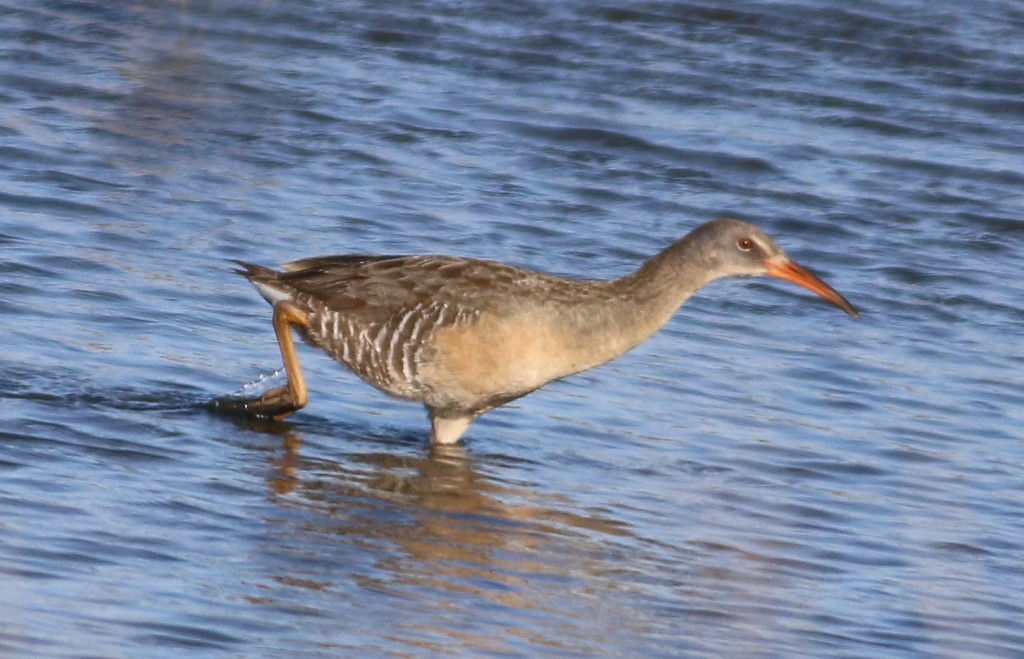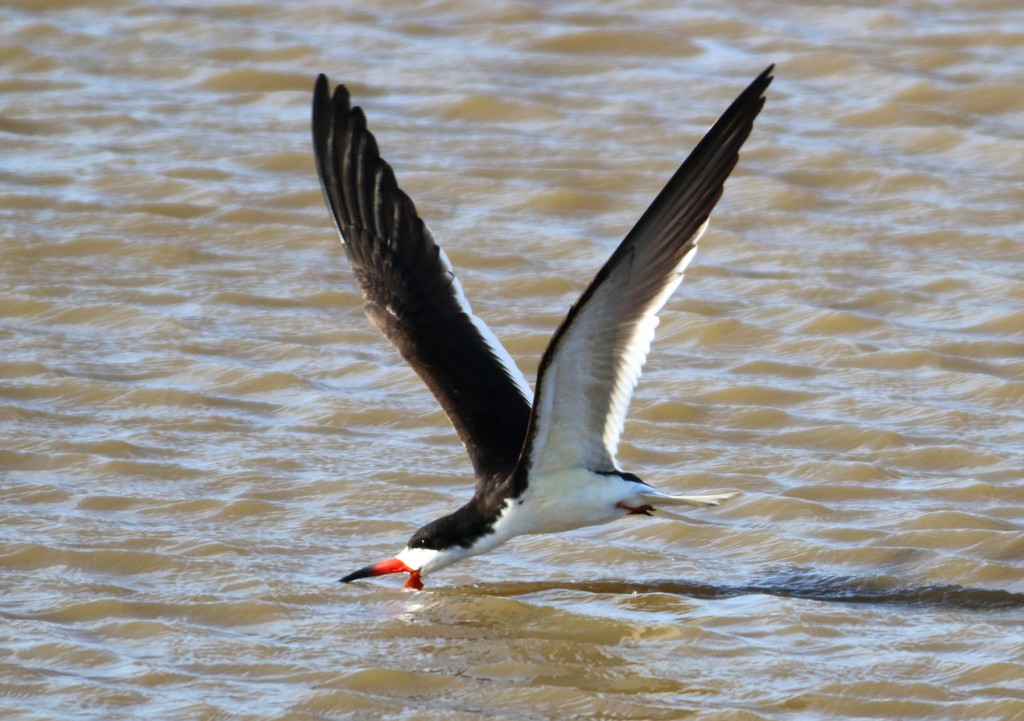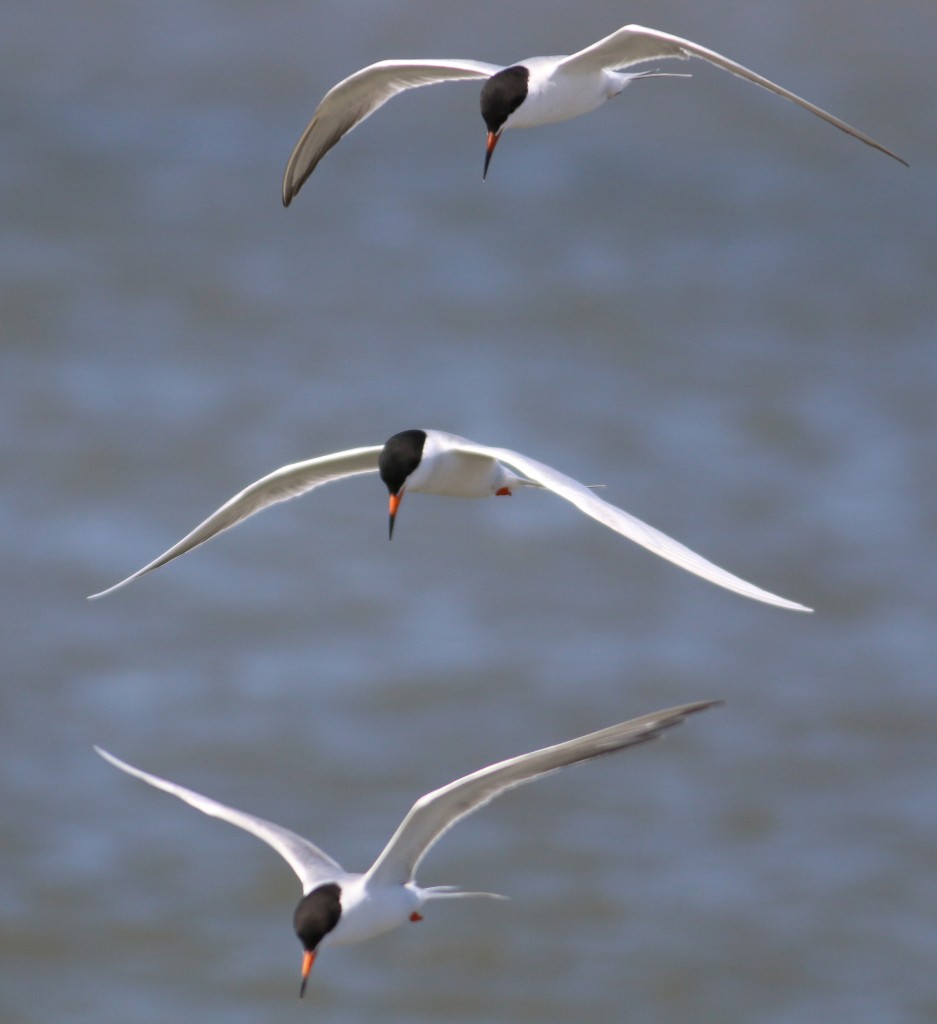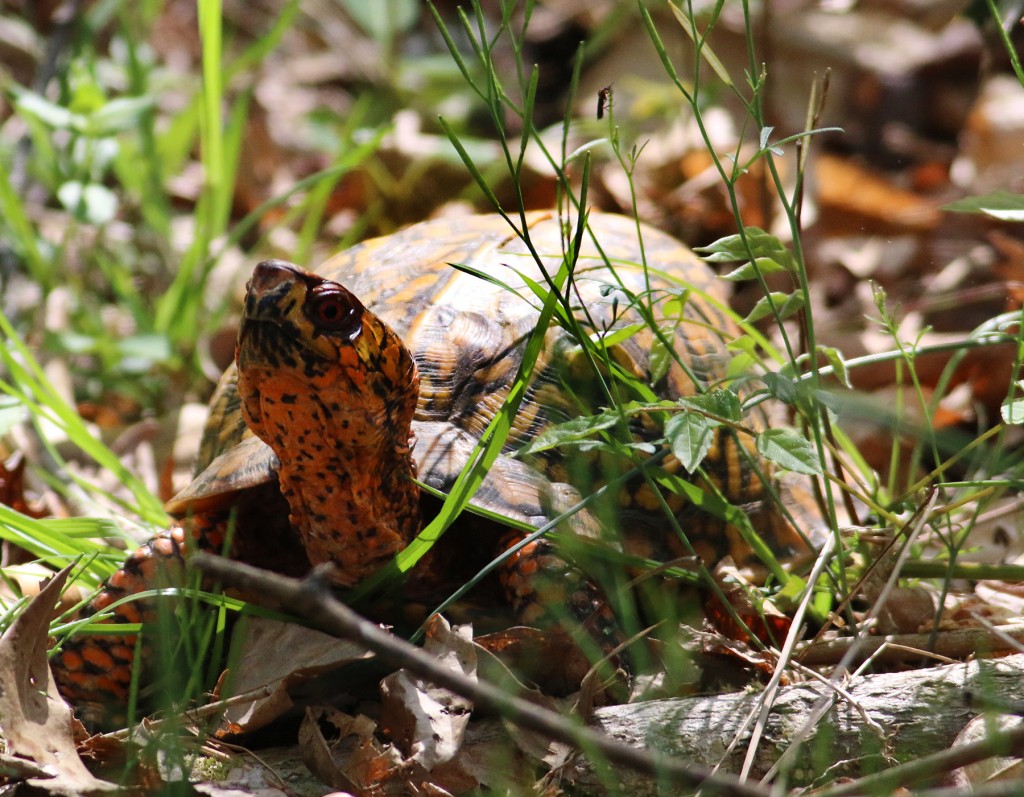We are currently in what is perhaps the best time of year in terms of species diversity here in the northeast. Some ducks and other winter species are still lingering, shorebirds are moving through, and warblers and other passerines are headed northward. Last week Jeanine and I participated in the weekly survey at Forsythe NWR, and when we entered our sightings into eBird, I was surprised to find that we had tallied 92 species with relatively little effort, with double digit numbers each of warblers, ducks, and shorebirds. That raised the possibility of trying to find 100 species in one day at one location. It’s not a novel idea; after all, we live in a birding world of Big Years, Big Days, Big Sits, Century Runs, and Break-a-Hundred Days. I had never thought of trying it myself though, but the idea of trying for 100 species in a very limited area was very appealing to me. And thankfully, Jeanine was game for trying it too.
Neither of us had the energy to start in pre-dawn hours for nocturnal or crepuscular species, so we began at 8AM. The weather reports were far from optimal, with fog predicted in the morning, and strong winds in the afternoon. Indeed, when I arrived, the woods were bathed in fog, thick enough to convince me to leave my camera in the car. (Besides, as we all know, leaving the camera behind is the best way to ensure finding good birds, right?) We did well in the woods and along the pond shores, and in addition to many of the expected common species, we also found two Hooded Warblers, a first-of-season (FOS) Blackburnian Warbler, four Spotted Sandpipers, Wood Ducks, a Veery, and late Red-breasted Nuthatches (it’s been that kind of year for Red-breasteds). After stopping by the car for some snacks and the camera (by this time the fog had dissipated), we were rewarded with a Blue Grosbeak, and Jeanine spotted the bird of the day, a male Summer Tanager. As we headed into the marsh drive, we already had 46 species, with shorebirds, ducks, and waders still unaccounted for. It was looking promising.
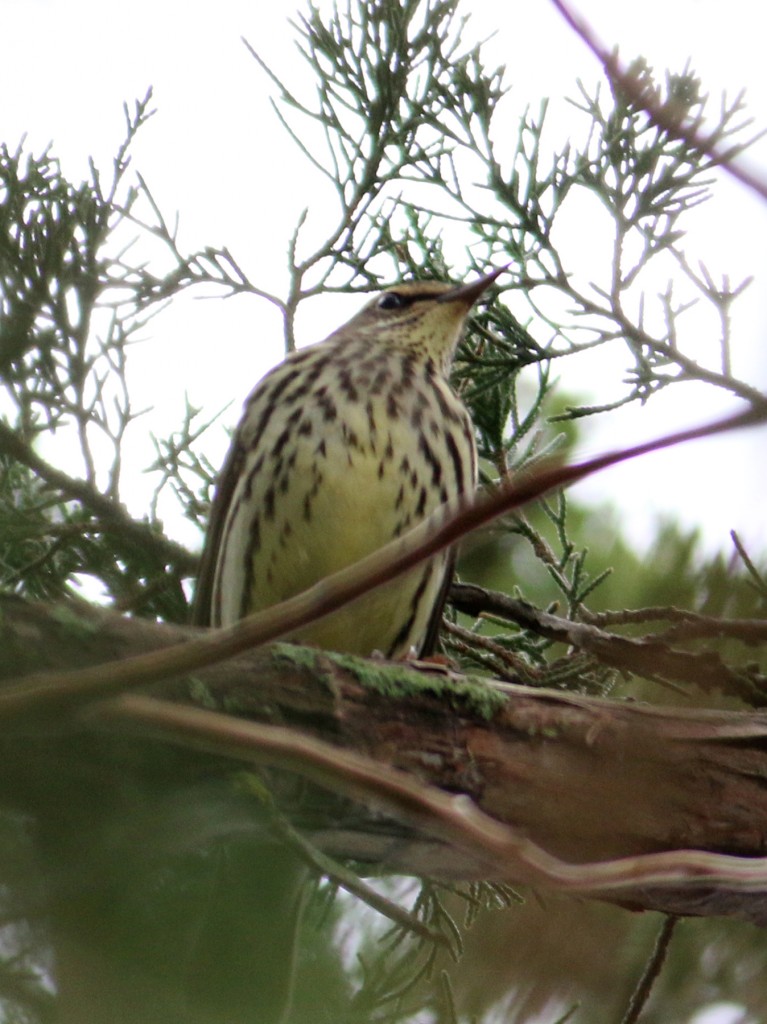
A Northern Waterthrush from an atypical vantage point. I’m more used to seeing them from above as they probe along muddy shorelines.
On the drive, the tide was high, so there were no mudflats in the tidal marsh channel, but fortunately some mudflats were available in the southwest impoundment. We did well with shorebirds there, spotting an impressive flock of Whimbrels, many peeps, and a nice mix of shorebirds transitioning into breeding plumage, with a pair of uncommon Stilt Sandpipers being a highlight. These birds can be difficult to identify in fall when I typically see them in their non-breeding plumage. We took a lunch break near the Peregrine Tower, and smiled after finding that our tally was already up to 92 species.

This is a Black-headed Gull that has been hanging around Forsythe for a few weeks now, just beginning to develop its namesake hood.
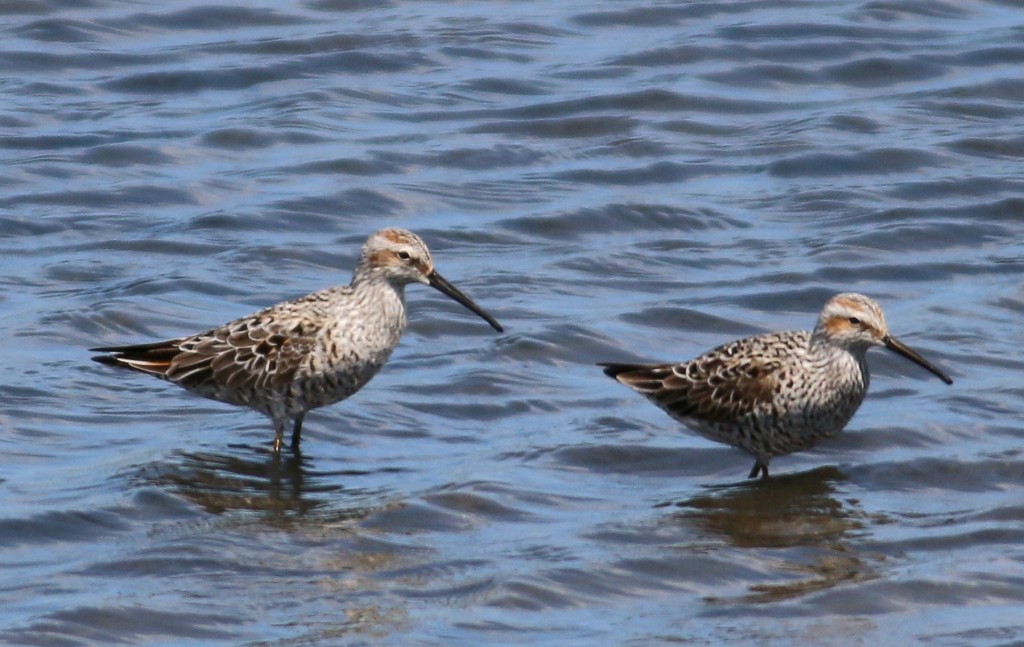
A pair of Stilt Sandpipers were mixed in with a flock of Yellowlegs and Short-billed Dowitchers. They were relatively easy to locate due to the rufous patches on their face.
Now that we were over 90 species, the countdown to 100 could begin in earnest. But the winds were increasing in intensity, to the point that it was hard to open the car doors, and the car interior was layered with a veneer of dust coming through the vents. A fly-by FOS Least Tern was very welcome, and a group of ducks hunkered in the reeds harbored a Northern Shoveler and two Blue-winged Teals. A flock of Starlings that were struggling with the wind on the shoreline brought us up to 96 species (I have never been as happy to see Starlings!). At the end of the marsh we finally found a few Black-bellied Plovers and heard the delightful song of the Marsh Wren. Now it was back into the woods for a short walk out of the wind, needing only two more species. A Great Crested Flycatcher cooperated. What would be species #100? A split second after I asked that question, an Ovenbird sang its loud “tee-cher tee-cher tee-cher” and we celebrated. After picking up a few more species in the fields (Field Sparrow, Prairie Warbler, and Eastern Kingbird), we were at 103 species after one full loop of the refuge.
We drove the loop again, but the winds were fierce, gusting up to 36 mph. Having broken into triple digits we could relax and enjoy longer looks at the birds as we padded the list. We picked up a few more species, ending up with a Tri-colored Heron (another FOS) being blown across the marsh for species #109 after a little more than 10 hours of birding. Not bad at all.
It was an interesting day. I generally avoid any form of birding that smacks of competition or that accentuates numbers, but this was fun. I suspect that this was the most bird species that I have seen in a single day, and it was even more rewarding to do it in such a limited area. Will we do it again? In the fall? Or next year? Or at a different location? Stay tuned.

